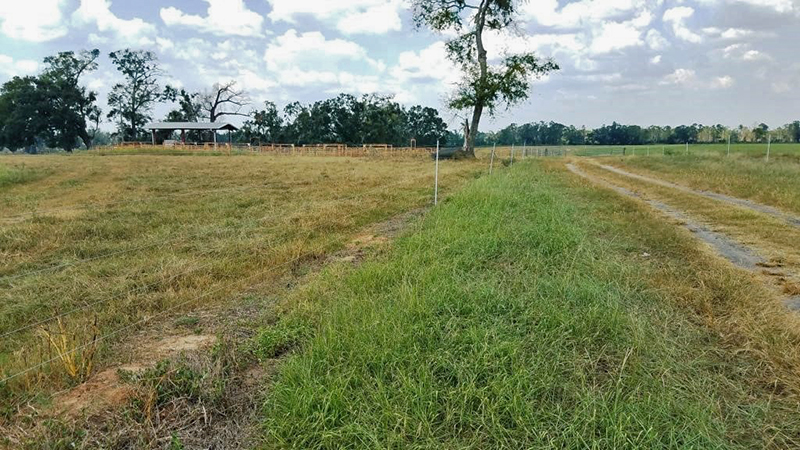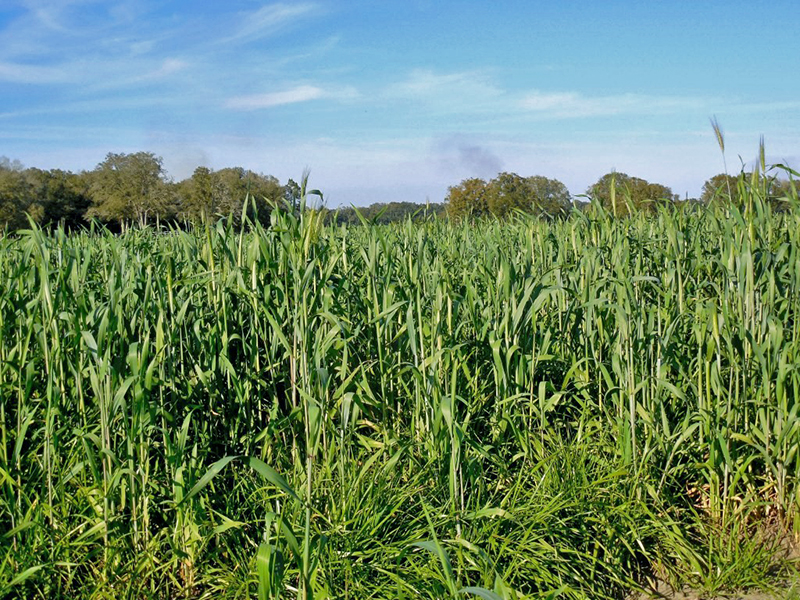Cheryl Mackowiak, UF/IFAS (Soil fertility/water quality) & Ann Blount, UF/IFAS (Forage breeding/genetics)
Now is the time to purchase your cool-season cover crop seed! Cover crops are used to protect bare soil over the winter months and for grazing in planted fields and pastures. To better understand your plant selection options, the most current regional variety recommendations are available online: 2019 Cool-Season Forage Variety Recommendations for Florida . Many varieties sell out early, so avoid disappointment with poor performing varieties by locking in your seed purchases now. Call your local feed and seed store, or if you are unsure where to locate seed, call your county extension office. An agent there will be able to assist you with variety selections, based upon your needs and the seed outlets in your area.
Planting Date & Rate
Although many of the cool-season forages can be planted now, and some locations have received enough rain for planting, much of North Florida remains in severe to extreme drought conditions, and much of peninsular Florida is abnormally dry (Figure 1). Additionally, October is one of the driest months of the year, so rainfall totals over the next few weeks might remain low. Good soil moisture is key to good germination and early establishment. We typically lose about 3/4 acre-inches of water each week from a combination of plant transpiration and field evaporation (combined processes = evapotranspiration) at this time of year. Thus, North Florida likely requires at least 1 acre-inch per week over the next several weeks to meet normal water loss and to begin recharging the subsoil (below 1 foot) with moisture. Without irrigation, it may be worth waiting to plant until mid-November, when rain chances improve. Planting can also continue through December, but note that cool-season full cover will likely be delayed into February, and may not adequately shade out early establishing winter weeds. For forage or grain production, use recommended seeding rates (see link, above), but if the cover crop is being used to limit soil erosion in bare fields, then a lower (roughly half-rate) planting rate is often acceptable with our soils. If you mix cover crop species, then reduce the seeding rate of each.

Figure 1. Droughty fields in late September 2019. Over-grazed grass (left) results in shallower rooting where soils are drier (soil dries from the surface, then moves downwards). In comparison, ungrazed grass (right of fence line) will generally have deeper rooting, where soil moisture is greater (credit: C. Mackowiak), UF/IFAS)
–
Land Preparation
Prepare your pastures for winter planting by closely grazing or mowing down the existing summer stand. This results in less water, nutrient, and light competition with the emerging cool-season forages. You can also till an area for cool-season forage production. This might be even more beneficial this year, because of the previously low rainfall. A prepared seedbed minimizes competition for nutrients and water, resulting in faster establishment and often greater yields (Figure 2).

Figure 2. A cover crop mix of cereal rye (tall) and annual ryegrass (foreground) in February after planting in early November on tilled land. ‘Florida 401’ rye forms heads in about 60 days if planted in fall, while annual ryegrass maximum growth rate occurs later in the season. (credit: C. Mackowiak, UF/IFAS).
–
Fertilization
Target your soil pH to a range from 5.5 to 6.5. If you find that your soil is near the low (acidic) end of the scale, consider applying lime. However, do not apply lime within a month of your fertilizer application to minimize interference with nitrogen and phosphorus. If you have not limed yet, you might consider waiting until later winter, prior to transition into summer forages. Cool-season cover crops may include a combination of grasses (small grains, annual ryegrass), legumes (clovers, vetch, winter pea), and even brassicas (turnips). The legumes and brassicas tend to take up more potassium, calcium, magnesium, sulfur, and micronutrients than grasses, so make sure your pasture is adequately fertilized to support these forages. The recommended method for determining this is by sampling the soil and having it analyzed by a reputable lab. The soil report will provide liming and fertilizer recommendations based upon the cover crop you specify. In mixed plantings, you might request your recommendations based upon the legume component, and then include around 30 to 50 lbs N/acre to ensure the grass component receives adequate nitrogen (N). If the cover crop is being used to minimize soil erosion from a field following row crop harvest (used as a catch crop for nutrients), then fertilizer can often be omitted (such as following peanuts) or a reduced amount (30 lbs N/acre and 10 lbs S/acre) might be applied, especially following corn, millet, or sorghum-sudangrass.
- 2024 Perennial Peanut Field Day – June 6 - April 5, 2024
- Nitrogen Fertilization of Perennial Summer Grasses - June 30, 2023
- Utilizing Winter Forage Blends for Insurance Against Climate Chaos - January 13, 2023
